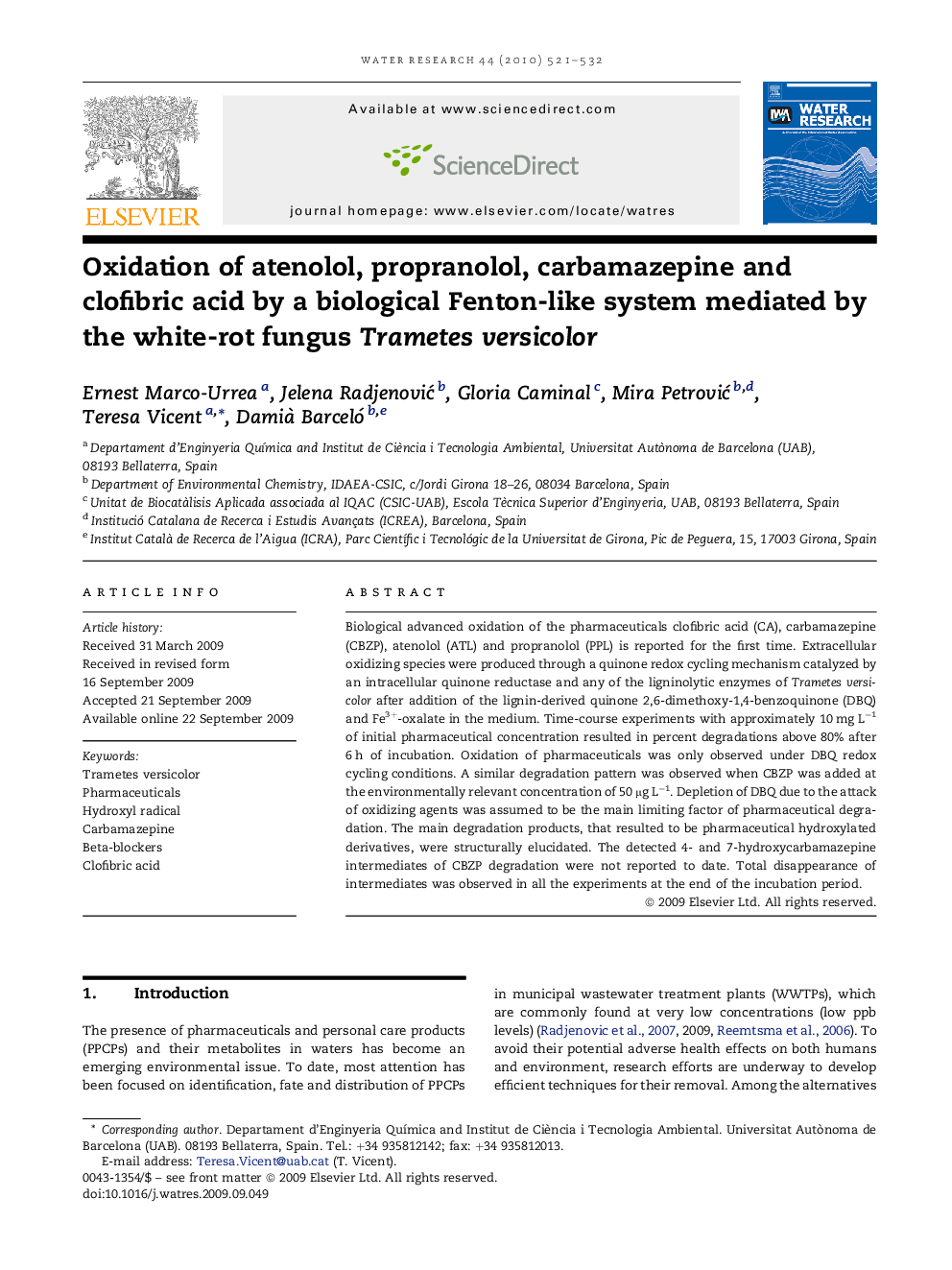| کد مقاله | کد نشریه | سال انتشار | مقاله انگلیسی | نسخه تمام متن |
|---|---|---|---|---|
| 4482821 | 1316870 | 2010 | 12 صفحه PDF | دانلود رایگان |
عنوان انگلیسی مقاله ISI
Oxidation of atenolol, propranolol, carbamazepine and clofibric acid by a biological Fenton-like system mediated by the white-rot fungus Trametes versicolor
دانلود مقاله + سفارش ترجمه
دانلود مقاله ISI انگلیسی
رایگان برای ایرانیان
کلمات کلیدی
موضوعات مرتبط
مهندسی و علوم پایه
علوم زمین و سیارات
فرآیندهای سطح زمین
پیش نمایش صفحه اول مقاله

چکیده انگلیسی
Biological advanced oxidation of the pharmaceuticals clofibric acid (CA), carbamazepine (CBZP), atenolol (ATL) and propranolol (PPL) is reported for the first time. Extracellular oxidizing species were produced through a quinone redox cycling mechanism catalyzed by an intracellular quinone reductase and any of the ligninolytic enzymes of Trametes versicolor after addition of the lignin-derived quinone 2,6-dimethoxy-1,4-benzoquinone (DBQ) and Fe3+-oxalate in the medium. Time-course experiments with approximately 10 mg Lâ1 of initial pharmaceutical concentration resulted in percent degradations above 80% after 6 h of incubation. Oxidation of pharmaceuticals was only observed under DBQ redox cycling conditions. A similar degradation pattern was observed when CBZP was added at the environmentally relevant concentration of 50 μg Lâ1. Depletion of DBQ due to the attack of oxidizing agents was assumed to be the main limiting factor of pharmaceutical degradation. The main degradation products, that resulted to be pharmaceutical hydroxylated derivatives, were structurally elucidated. The detected 4- and 7-hydroxycarbamazepine intermediates of CBZP degradation were not reported to date. Total disappearance of intermediates was observed in all the experiments at the end of the incubation period.
ناشر
Database: Elsevier - ScienceDirect (ساینس دایرکت)
Journal: Water Research - Volume 44, Issue 2, January 2010, Pages 521-532
Journal: Water Research - Volume 44, Issue 2, January 2010, Pages 521-532
نویسندگان
Ernest Marco-Urrea, Jelena RadjenoviÄ, Gloria Caminal, Mira PetroviÄ, Teresa Vicent, Damià Barceló,